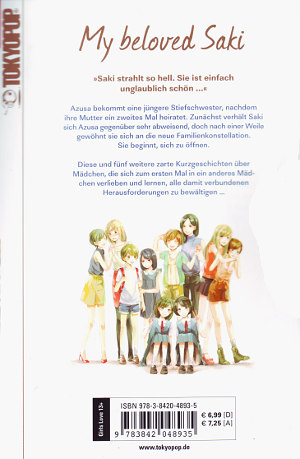Why has Boku to Misaki-sensei become such a cultural phenomenon? A bold statement: This series is more than just an anime or manga; it's a profound exploration of human relationships and personal growth that resonates with audiences worldwide.
In the expansive landscape of Japanese pop culture, few works have managed to capture the hearts of fans quite like Boku to Misaki-sensei. This narrative masterfully delves into themes of self-discovery, societal norms, and the complexities of human connection. At its core, this series offers readers and viewers an intimate look at the delicate balance between professional and personal life, while also exploring universal truths about love and identity. The story revolves around the protagonist, a high school student named Tsubasa Kamishiro, and his unexpected relationship with his homeroom teacher, Misaki Homura. Their interactions highlight not only the challenges they face individually but also the broader implications of their bond within society.
| Bio Data & Personal Information | Career & Professional Information |
|---|---|
| Name: Robico | Profession: Manga Artist |
| Date of Birth: Unknown | Notable Works: Boku to Misaki-sensei, Nijiiro Days |
| Place of Origin: Japan | Publisher: Ichijinsha |
| Website: Ichijinsha Official Website | Awards: None publicly disclosed |
The narrative structure of Boku to Misaki-sensei sets it apart from other works in the genre. Written and illustrated by Robico, the series was serialized in Ichijinsha's Monthly Comic Rex magazine from June 2015 to March 2018. Over this period, it accumulated a dedicated following due to its authentic portrayal of teenage life and adult responsibilities. Each chapter intricately weaves humor, romance, and slice-of-life elements, creating a tapestry that feels both relatable and aspirational. Moreover, the serialization allowed for gradual character development, enabling readers to form deep connections with the protagonists over time.
One cannot discuss Boku to Misaki-sensei without acknowledging its impact on contemporary discussions surrounding age dynamics in romantic relationships. While some critics argue that the premise may be controversial, others praise the way the series handles these topics with sensitivity and nuance. By presenting characters who grapple with real-world dilemmas, the story encourages audiences to reflect on their own values and perceptions. For instance, Misaki Homura's struggles as a young teacher balancing her career aspirations with personal desires serve as a mirror to many professionals navigating similar challenges.
Tsubasa Kamishiro's journey from a shy, reserved teenager to someone capable of expressing himself authentically mirrors the experiences of countless adolescents. His growth is depicted through subtle yet meaningful moments—whether it's finding the courage to pursue his passion for photography or standing up for what he believes in despite societal pressures. These developments are complemented by vivid artwork that captures emotions with precision, enhancing the storytelling experience significantly.
Thematically, Boku to Misaki-sensei transcends conventional narratives by addressing issues pertinent to modern society. It questions traditional gender roles, examines the pressures faced by educators, and sheds light on the importance of consent and mutual respect in any relationship. Through its portrayal of diverse secondary characters, the series also highlights the significance of community and support systems in personal development. Furthermore, the use of humor serves as a bridge connecting disparate elements of the plot, ensuring that even heavy subjects remain accessible to all age groups.
From a cultural perspective, Boku to Misaki-sensei reflects aspects of Japanese education systems and workplace cultures. The dynamic between students and teachers is explored in depth, challenging stereotypes while celebrating genuine camaraderie. Additionally, the setting provides insight into urban life in Japan, showcasing locations and customs that enrich the narrative visually and contextually. This attention to detail contributes to the immersive quality of the series, making it resonate deeply with both domestic and international audiences alike.
As a result of its multifaceted approach, Boku to Misaki-sensei has garnered widespread acclaim across various platforms. Fans appreciate how it balances lighthearted moments with serious reflections, offering something for everyone regardless of background or preferences. Its influence extends beyond entertainment, inspiring conversations about important social issues and fostering empathy among its viewers. Ultimately, this beloved series continues to leave a lasting impression long after its conclusion, proving itself as a timeless addition to the world of manga and anime.
Table summarizing key information related to Boku to Misaki-sensei:
| Category | Details |
|---|---|
| Genre | Romance, Comedy, Slice-of-Life |
| Publication Period | June 2015 - March 2018 |
| Chapters/Volumes | Serialized in Monthly Comic Rex; collected into seven tankobon volumes |
| Main Characters | Tsubasa Kamishiro, Misaki Homura |
| Themes Explored | Human relationships, self-discovery, societal norms, personal growth |
| Target Audience | Teens and young adults interested in realistic portrayals of romance and everyday life |
For those unfamiliar with Boku to Misaki-sensei, diving into its pages promises an unforgettable adventure filled with laughter, introspection, and heartfelt connections. Whether you're drawn to its artistic style, compelling storyline, or thought-provoking themes, there's no denying the magic that lies within this remarkable creation. As one of the most celebrated titles in recent years, it remains a testament to the power of storytelling when executed with care and authenticity.
In summary, Boku to Misaki-sensei achieves greatness through its ability to connect deeply with its audience while tackling complex subjects head-on. From its engaging plotlines to its memorable characters, every aspect of the series works harmoniously to deliver an experience that stays with readers long after turning the final page. As such, it deserves recognition not merely as another entry in the vast library of manga and anime but as a landmark piece contributing meaningfully to global discourse around love, identity, and societal expectations.



